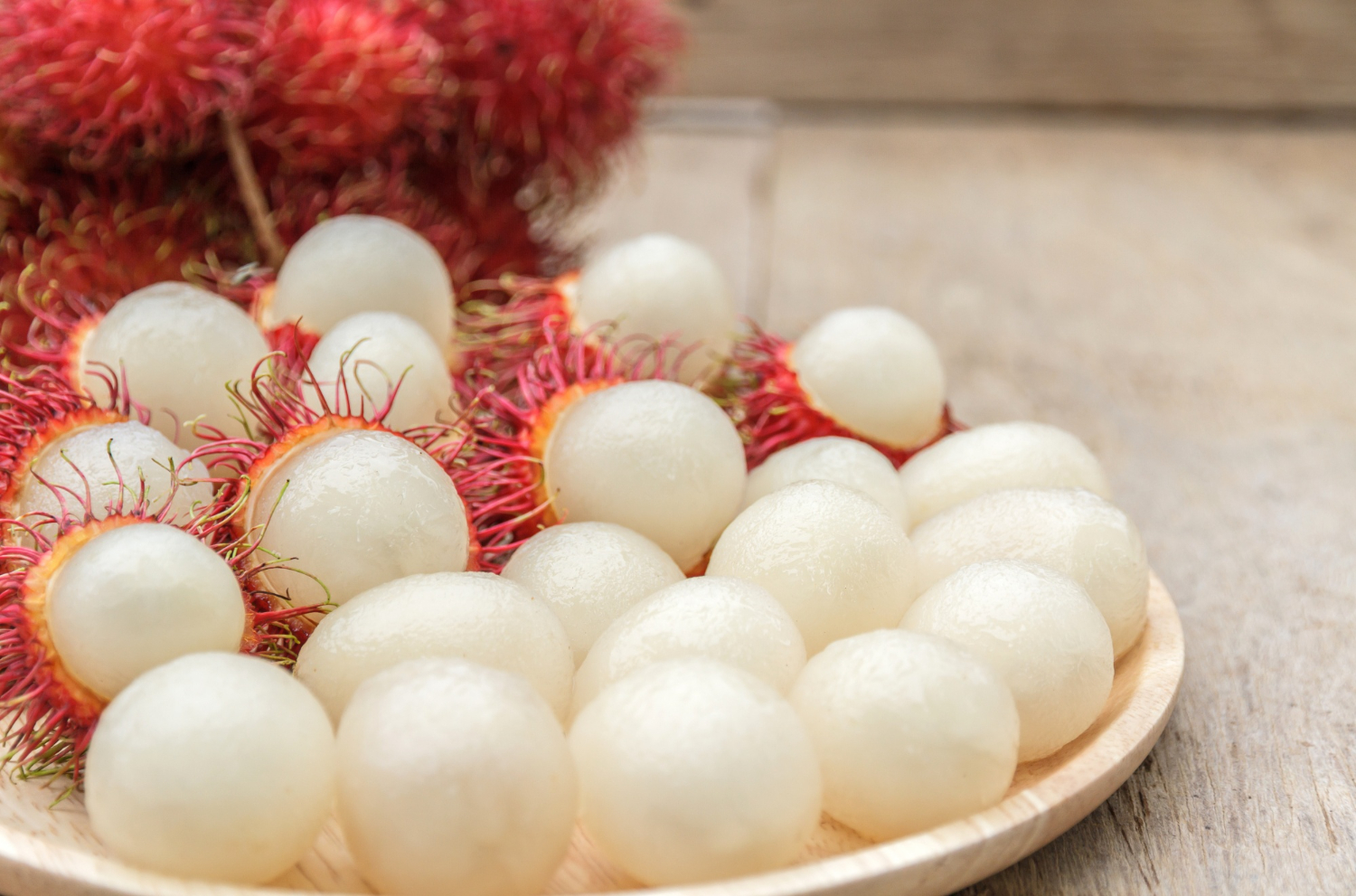Rambutan Processing involves transforming fresh rambutan fruits into various products. Here’s an overview of the steps involved in rambutan processing

Step
- Harvesting: Harvest ripe rambutan fruits with bright, vibrant colors. Gently twist or cut the fruits from the tree to avoid damaging them.
- Washing and Sorting: Thoroughly wash the harvested rambutans to remove any dirt or debris. Sort the fruits based on size, color, and quality, discarding any damaged or unripe ones.
- Peeling: Use a knife to make a shallow cut around the skin of the rambutan. Carefully peel away the skin, revealing the juicy flesh inside. Be cautious of the spiky hairs on the skin, as they can be prickly.
- Removing the Seed: Separate the edible flesh from the seed inside the rambutan. The flesh is the desirable part for consumption.
- Processing Methods:
- Fresh Consumption: Enjoy the rambutan flesh fresh as a sweet and juicy snack.
- Freezing: Preserve the rambutan flesh by freezing it. Pack the flesh in airtight containers or freezer bags and store them in the freezer for later use. Frozen rambutan can be enjoyed as is or used in smoothies or desserts.
- Canning: Can the rambutan fruit in syrup for longer shelf life. Pack the peeled rambutan segments into sterilized jars and cover them with a sweet syrup solution. Process the jars in a water bath or pressure canner to ensure proper sealing and preservation.
- Rambutan Jam or Jelly: Cook the peeled and deseeded rambutan flesh with sugar and lemon juice to make rambutan jam or jelly.
- Packaging: Package the processed rambutan products, such as fresh fruit, frozen rambutan, canned rambutan, or rambutan jam, in suitable containers or packaging materials. Label the packages with appropriate information.
- Storage and Distribution: Store the processed rambutan products in appropriate conditions to maintain their freshness and quality. Distribute them to retailers, supermarkets, or export them to different markets.
